 W
WItalian submarine Ambra was a Perla-class submarine built for the Royal Italian Navy during the 1930s. She was named after a gemstone Amber.
 W
WItalian submarine Aradam was an Adua-class submarine built in the 1930s, serving in the Regia Marina during World War II. She was named after the Amba Aradam mountain in Ethiopia.
 W
WHMS B10 was one of eleven B-class submarines built for the Royal Navy in the first decade of the 20th century. Completed in 1906, she was initially assigned to the Home Fleet, before the boat was transferred to the Mediterranean six years later. After the First World War began in 1914, B10 played a minor role in the Dardanelles Campaign. The boat was transferred to the Adriatic Sea in 1916 to support Italian forces against the Austro-Hungarian Navy. She was anchored in Venice when it was bombed by Austro-Hungarian aircraft on 9 August; B10 was sunk by one of their bombs and became the first submarine to be sunk by an aircraft in history. Salvaged by the Italians, she caught fire while under repair and became a constructive total loss. Her hulk was subsequently sold for scrap.
 W
WItalian submarine Beilul was an Adua-class submarine built for the Royal Italian Navy during the 1930s. It was named after a town of Beilul in Eritrea.
 W
WBévéziers (Q179) was a Redoutable-class submarine of the French Navy. The class is also known as the "1500-ton class" and were termed in French French: « de grande patrouille». She was named after the 1690 Battle of Beachy Head, known in France as the Bataille de Bévéziers.
 W
WUSS Bullhead (SS-332), a Balao-class submarine, was the last US Navy ship sunk by enemy action during World War II, probably on the same day that an atomic bomb was dropped on Hiroshima. It was the only ship of the United States Navy to be named for the bullhead. Her keel was laid down by the Electric Boat Company of Groton, Connecticut. She was launched on 16 July 1944 sponsored by Mrs. Howard R. Doyle, and commissioned 4 December 1944 with Commander W. T. Griffith in command.
 W
WThe French submarine Caïman was a Requin-class submarine built for the French Navy in the mid-1920s. Laid down in August 1924, it was launched in March 1927 and commissioned in February 1928. On 9 June, Caïman narrowly missed the British light cruiser HMS Ajax off Syria. It was scuttled at Toulon on 27 November 1942 to prevent her capture by the Germans, then raised in February 1943. It was sunk again on 11 March 1944 by Allied aircraft.
 W
WUSS Cisco (SS-290), a Balao-class submarine, was the only ship of the United States Navy to be named for the cisco, a whitefish of the Great Lakes. Her keel was laid down by the Portsmouth Navy Yard in Kittery, Maine. She was launched on 24 December 1942 sponsored by Mrs. A. C. Bennett, through her proxy, Mrs. N. Robertson, and commissioned on 10 May 1943 with Commander James W. Coe in command. She reported to the Pacific Fleet.
 W
WThe French submarine Diamant was a Saphir-class submarine built for the French Navy in the mid-1930s. Laid down in July 1930, it was launched in May 1933 and commissioned in June 1934. Diamant was scuttled at Toulon on 27 November 1942 to prevent her capture by German forces, then refloated by Italian forces on 29 March 1943. On 22 June 1944, Diamant was bombed and sunk at Toulon by Allied aircraft.
 W
WUSS Grayback (SS-208), a Tambor-class submarine, was the first ship of the United States Navy to be named for the lake herring, Coregonus artedi.
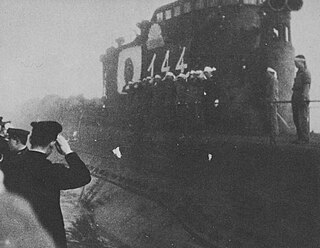 W
WI-44 was an Imperial Japanese Navy Type B2 submarine. Completed and commissioned in January 1944, she served in the late stages of World War II, she conducted war patrols in the Pacific Ocean as a conventional submarine before she was converted into a kaiten suicide attack torpedo carrier. She then conducted kaiten operations during the Battle of Iwo Jima and the Battle of Okinawa before she was sunk in April 1945.
 W
WThe Japanese submarine I-70 was a Kaidai type of cruiser submarine active in World War II. A KD6 boat, I-70 was built for the Imperial Japanese Navy (IJN) in the early 1930s. At that time it was commanded by Commander Sano Takao.
 W
WThe Japanese submarine I-165 was a Kaidai type of cruiser submarine active in World War II. A KD5 sub-class boat, I-165 was built for the Imperial Japanese Navy (IJN) during the early 1930s.
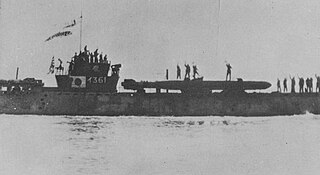 W
WI-361 was an Imperial Japanese Navy Type D1 transport submarine. Completed and commissioned in May 1944, she served in World War II and conducted transport missions between Japan and Wake Island until she was converted into a kaiten suicide attack torpedo carrier 1945. She was sunk during her first kaiten mission in May 1945.
 W
WItalian submarine Iride was a Perla-class submarine built for the Royal Italian Navy during the 1930s. Originally, she was named Iris until July 1936, but was renamed shortly before her launch.
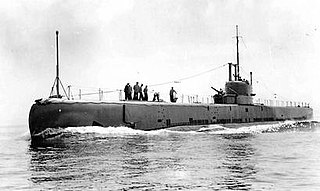 W
WHMS Narwhal (N45) was one of the six ship class of Grampus-class mine-laying submarine of the Royal Navy. She was built by Vickers Armstrong, Barrow and launched 29 August 1935. She served in the Second World War in home waters. She was lost in the North Sea on 23 July 1940, probably sunk by German aircraft.
 W
WThe French submarine Nautilus was a Saphir-class submarine built for the French Navy in the mid-1930s. Laid down in August 1927, it was launched in March 1930 and commissioned in July 1931. Nautilus was disarmed at Bizerte, Tunisia and captured there on 8 December 1942 by Italian forces. On 31 January 1943, it was sunk at Bizerte during an Allied air raid. Nautilus was raised but not repaired and finally stricken on 12 August 1947.
 W
WHMS P36 was a British U class submarine, a member of the third group of that class to be built. She was sunk at the quayside in Malta in 1942, and some of her survivors were shipwrecked again in another submarine less than six weeks later.
 W
WHMS P39 was a Royal Navy U-class submarine built by Vickers-Armstrong at Barrow-in-Furness.
 W
WHMS Pandora was a British Parthian-class submarine commissioned in 1930 and lost in 1942 during the Second World War. This class was the first to be fitted with Mark VIII torpedoes. On 4 July 1940 she torpedoed and sank the French aviso Rigault de Genouilly off the Algerian coast. In an extension of the Lend-Lease program, Pandora, along with three other British and French submarines, was overhauled at Portsmouth Naval Shipyard in the United States. She was sunk on 1 April 1942 by Junkers Ju 87 aircraft from Sturzkampfgeschwader 3 at the Valletta dockyard, Malta.
 W
WPerle was a Saphir-class submarine built for the French Navy in the mid-1930s. Laid down in 1931, she was launched in July 1935 and commissioned in March 1937. In November 1942, after Operation Torch, Perle joined the Allied fleet. While returning from refitting in the United States, Perle was mistaken for a U-boat by an aircraft from the British ship Empire MacCallum and sunk.
 W
WPhoque was a Requin-class submarine built for the French Navy in the mid-1920s. Laid down in May 1924, it was launched in March 1926 and commissioned in May 1928. In April 1941, it was disarmed at Bizerte, Tunisia and captured there by the Italians on 8 December 1942 and renamed FR 111. It was sunk on 28 February 1943 10 miles off Murro di Porco, Sicily by Allied aircraft.
 W
WRo-101 was an Imperial Japanese Navy Ro-100-class submarine. Completed and commissioned in October 1942, she served in World War II and operated in the Solomon Islands and the New Guinea area until she was sunk in September 1943 during her eighth war patrol.
 W
WARA Santa Fe was an Argentine Balao-class submarine that was lost during the Falklands War. Built by the US during the Second World War, the ship operated in the United States Navy as USS Catfish (SS-339) until 1971 when she was transferred to the Argentine Navy. She served until 1982 when she was captured by the British at South Georgia after being seriously damaged and subsequently sank along a pier, with just her sail visible above the waterline. The submarine was raised, towed out of the bay and scuttled in deep waters in 1985.
 W
WHMS Seal was one of six Grampus-class mine-laying submarines of the Royal Navy. She served in the Second World War and was captured by the Kriegsmarine and taken into German service as UB, one of several captured subs. She was the only submarine the Germans captured at sea during World War II. Her capture allowed the Germans to correct a critical fault in their U-boat torpedoes.
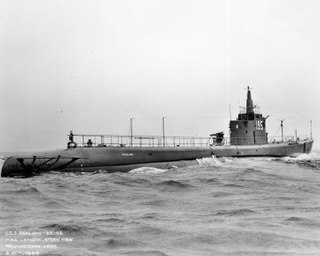 W
WUSS Sealion (SS-195), a Sargo-class submarine, was the first ship of the United States Navy to be named for the sea lion, any of several large, eared seals native to the Pacific.
 W
WHMS Shark was a second-batch S-class submarine built during the 1930s for the Royal Navy. Completed in 1934, the boat fought in the Second World War. Shark is one of twelve boats named in the song "Twelve Little S-Boats".
 W
WHMS Sunfish was a Royal Navy S-class submarine which was launched on 30 September 1936 and served in the Second World War. Sunfish is one of 12 boats named in the song Twelve Little S-Boats.
 W
WHMS Unbeaten was a U-class submarine, of the second group of that class, built by Vickers Armstrong, Barrow-in-Furness. She was laid down on 22 November 1939 and was commissioned on 10 November 1940. So far she has been the only ship of the Royal Navy to bear the name Unbeaten.
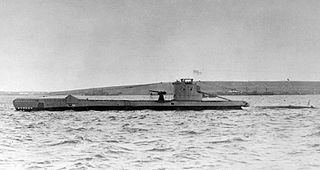 W
WHMS Urge was a British U-class submarine, of the second group of that class, built by Vickers Armstrong, Barrow-in-Furness. She was laid down on 30 October 1939, and was commissioned on 12 December 1940. From 1941–1942 she formed part of the 10th Submarine Flotilla based in Malta and is the only Royal Navy ship to have borne the name. Urge spent most of her career operating in the Mediterranean, where she damaged or sank a number of Italian warships and merchant vessels and took part in special operations. She was commanded by Lieutenant-Commander Edward Philip Tomkinson, DSO, RN. She was lost with all hands and a number of passengers on 27th April, 1942 after striking a German mine off Malta.
 W
WUSS Wahoo (SS-238) was a Gato-class submarine, the first United States Navy ship to be named for the wahoo. Construction started before the U.S. entered World War II, and she was commissioned after entry. Wahoo was assigned to the Pacific theatre. She gained fame as an aggressive and highly successful submarine after Lieutenant Commander Dudley Walker "Mush" Morton became her skipper. She was sunk by Japanese aircraft in October 1943 while returning home from a patrol in the Sea of Japan.